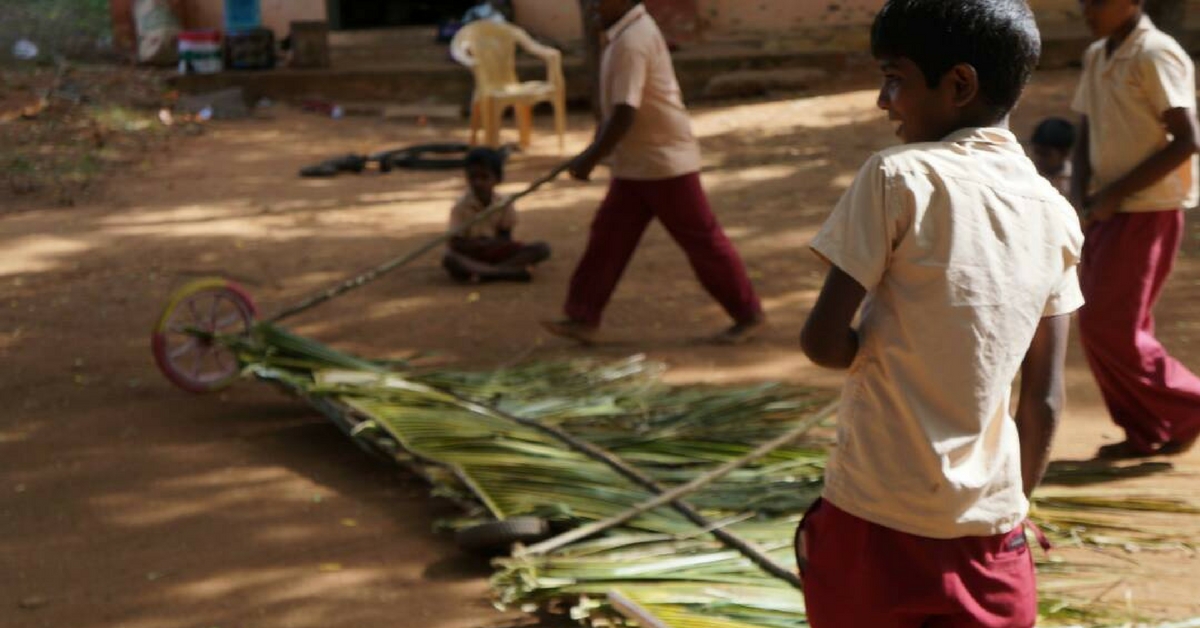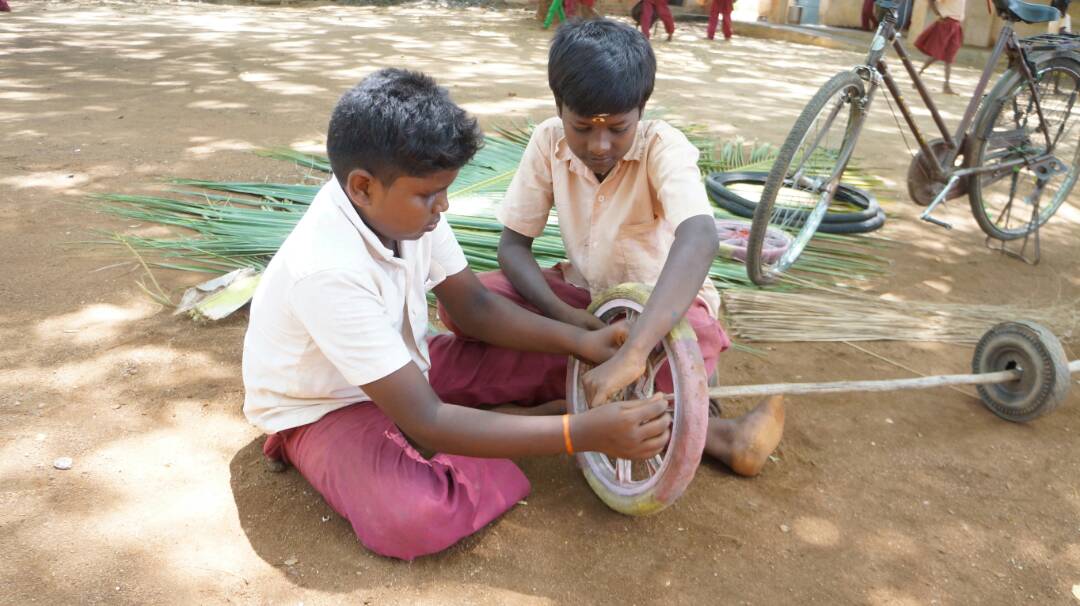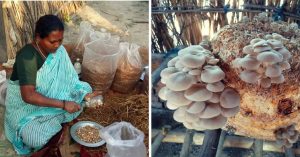TBI Blogs: These Kids Built a Vehicle from Waste Materials to Reduce Their School Sweeper’s Workload
Eager to help the elderly lady who sweeps the school’s large playground, students at a government school in Villupuram district of Tamil Nadu built a Sweeping Vehicle of coconut-leaves-on-wheels. The project was selected amongst the Top 26 stories at the ‘I CAN Awards 2016’ organised by Design for Change.

Students at Panchayat Union Middle School, Konerikuppa, noticed many problems in their school. The building was damaged, with paint peeling off, there were unnecessary bushes in the campus, and animals kept entering the premises. But after discussing amongst each other and taking a vote, they decided that the issue they most wanted to address was figuring out how to ease the burden of the elderly lady who swept the school’s large playground.
They used the simple 4-step formula of Feel-Imagine-Do-Share that has been developed by Design for Change – a not-for-profit organisation that challenges children to solve problems in their community – to achieve their goal.
The children – Yuvaraj E., Elavarasan, Sivakumar S., Sathish Kumar P., and Thirumalai K. – first went and interviewed the sweeper herself. They thought of roping in more labour from the municipality for help, and of helping her out directly by sweeping the grounds alongside her. However, this would consume their play-time. In order to be able to do both things, they thought up an idea of helping her sweep by using a play-way method that would be fun at the same time.
They designed a vehicle modelled on the geometrical instrument of the compass, which they used in class to draw circles. To make this, they collected waste palm wheels, coconut leaves, a stick, and wheels of small cycles.
By fixing the wheels to the stick and tying coconut leaves to it, the vehicle was designed to have a fulcrum and an arm – with the arm being a massive broom made of coconut leaves – that could easily sweep the large playground.


The students say they faced many failures in creating the vehicle, and had to increase the weight of the leaves in order to make it work effectively. The final vehicle is of two types – one can be used while cycling in circles, and the other while walking in circles.


After making this innovation, the students conducted a demo class with the elderly lady to also explain to her how the vehicle can be used. With the intention of sharing their idea with more people, they wrote letters to their nearest schools explaining the innovation and its purpose, and shared the idea with their community, the village president, and the municipality labourers.
The students today enjoy playing during their free-time using this vehicle while also sweeping the grounds at the same time. Watch the full story here:
The project went on to make it into the Top 26 stories in the ‘Quick Impact’ category, selected from amongst 3,600 Stories of Change submitted for the ‘I CAN Awards 2016’ organised by Design for Change in India. The innovation also received plenty of recognition at the awards. The students’ mentor Arockia Raj L. says that the school’s upcoming computer lab received tremendous support and much-needed funding.
Surely, most would agree that the task of education is to help shape a better world. But can children learn this in school? These children had a great degree of creative ingenuity to improvise resources and apply their learnings towards problem-solving. Seeing children like these have such empathetic leanings, one looks forward to a bright future indeed! As the PUMS students say, “We make a living by what we get, but a life by what we give.”
(All images courtesy Arockia Raj L.)
Be a part of one of the largest global movements of children driving change in their communities. Take up the ‘I CAN School Challenge’ in your classroom. Find out more online.
Like this story? Or have something to share? Write to us: [email protected], or connect with us on Facebook and Twitter.
NEW: Click here to get positive news on WhatsApp!
This story made me
- 97
- 121
- 89
- 167
Tell Us More
We bring stories straight from the heart of India, to inspire millions and create a wave of impact. Our positive movement is growing bigger everyday, and we would love for you to join it.
Please contribute whatever you can, every little penny helps our team in bringing you more stories that support dreams and spread hope.


















